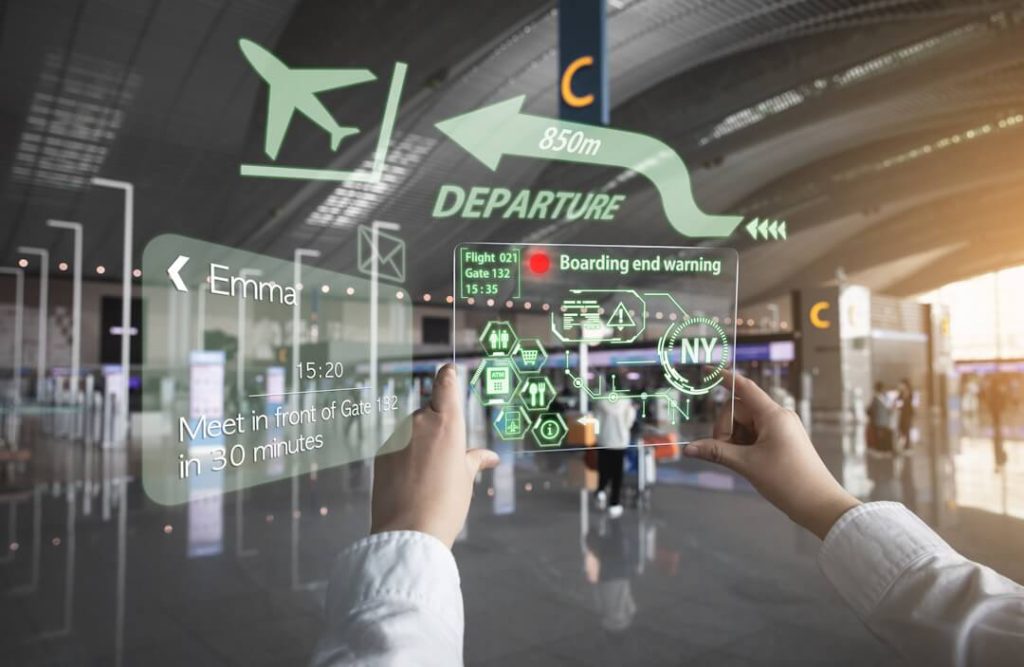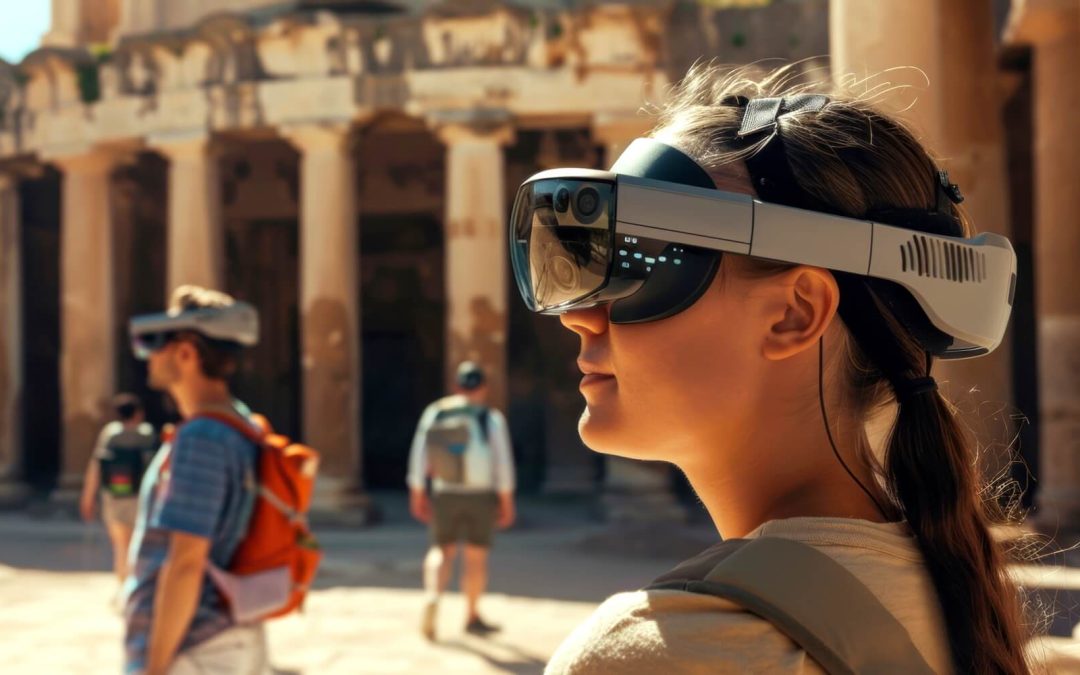In recent years, augmented reality (AR) has significantly reshaped the tourism landscape, offering innovative and immersive ways to explore and experience destinations. Augmented Reality is Transforming Tourist Experiences. This technology, which overlays digital information onto the real world, is revolutionizing how tourists interact with their surroundings, making travel more engaging and informative. Let’s dive into how AR is transforming tourist experiences.
Enhancing Navigation and Exploration
AR applications are enhancing navigation and exploration for tourists, providing real-time information and interactive guides.
Interactive City Tours
- City Tours: With AR, tourists can embark on virtual city tours that offer detailed insights into landmarks and historical sites. For example, users can point their smartphones at a building to see its history, interesting facts, and even historical photos (PlugXR) (SpringerLink).
- Navigation: AR apps provide interactive maps and directional arrows, helping tourists navigate unfamiliar cities with ease. These tools can highlight nearby attractions, restaurants, and other points of interest, making exploration seamless and enjoyable (SpringerLink) (Research & Markets).
Augmented Reality Navigation Apps
- Google Maps AR: Google Maps has integrated AR to enhance pedestrian navigation. Users can see digital arrows and directions overlaid on the real world through their phone screens, making it easier to navigate complex urban environments (SpringerLink).
- Citymapper: This app uses AR to help users find the best routes in cities, including public transport options and walking directions. The AR feature provides visual cues to ensure travelers don’t get lost (Travel Insights).
Enriching Cultural Experiences
AR is also playing a pivotal role in enriching cultural experiences for travelers. We learn more every day about how augmented reality is transforming tourist experiences.
Museum and Heritage Site Tours
- AR Museums: Many museums now offer AR tours that bring exhibits to life. Visitors can view 3D models of ancient artifacts, watch historical events reenacted, and gain deeper insights into the exhibits through interactive content (PlugXR) (SpringerLink).
- Heritage Sites: At historical sites, AR can overlay information about significant events, famous figures, and architectural details, enhancing the educational value of visits (SpringerLink) (Research & Markets).
Cultural Heritage and Art
- AR in Art Galleries: Art galleries are using AR to provide deeper context about artworks. Visitors can use their phones to view additional information, videos, and artist interviews, enhancing their understanding and appreciation of the art (Travel Insights).
- Historical Reenactments: AR applications can recreate historical events at heritage sites, providing tourists with a vivid and interactive way to learn about history. These reenactments can include audio narrations, animated scenes, and more (PlugXR).

Revolutionizing Hospitality
The hospitality industry is leveraging AR to offer unique and personalized experiences for guests.
Virtual Room Previews and Interactive Guides
- Room Previews: Hotels are using AR to allow potential guests to take virtual tours of rooms before booking. This immersive experience helps in making informed choices and reduces the likelihood of booking cancellations (PlugXR).
- Interactive Guides: AR-based guides provide self-guided tours with detailed information about hotel amenities, nearby attractions, and more, ensuring guests have all the information they need at their fingertips (PlugXR) (SpringerLink).
Enhanced Guest Services
- AR Room Service: Some hotels are integrating AR into their room service menus. Guests can view 3D models of dishes, read detailed descriptions, and even see how the food is prepared (Research & Markets).
- Localized Information: Hotels use AR to provide localized information about nearby attractions, restaurants, and activities. This helps guests plan their itinerary more effectively and discover hidden gems in the area (SpringerLink).
Boosting Adventure and Nature Tourism
AR is not just confined to urban tourism but also extends to adventure and nature tourism.
Immersive Outdoor Experiences
- Adventure Tourism: AR enhances outdoor activities by providing real-time information about trails, wildlife, and safety tips. Hikers, for example, can use AR to identify plant species, navigate complex trails, and learn about the natural history of the area (Research & Markets).
- Nature Parks: National parks and nature reserves are adopting AR to offer educational tours that highlight ecological and geological features, enriching visitors’ understanding and appreciation of nature (Travel Insights).
Wildlife and Environmental Education
- Wildlife Spotting: AR apps can help tourists identify wildlife in nature reserves. By pointing their devices at animals or plants, users can access detailed information about the species and their habitats (Research & Markets).
- Environmental Conservation: AR tours can educate visitors about environmental conservation efforts, highlighting the importance of protecting natural habitats and providing tips on how to minimize their ecological footprint during their visit (Travel Insights).
Key Benefits of AR in Tourism
- Real-time Information: AR provides instant access to detailed information about attractions, enhancing the educational value of tours.
- Interactive Experiences: AR makes travel more interactive and engaging, allowing tourists to interact with their surroundings in novel ways.
- Improved Navigation: AR applications help tourists navigate unfamiliar destinations with ease, reducing stress and enhancing the overall travel experience.
- Cultural Enrichment: AR brings historical and cultural sites to life, offering deeper insights and more immersive experiences.
- Personalized Hospitality: Hotels and other accommodations use AR to offer personalized experiences, from virtual room tours to interactive guides.
Conclusion
Augmented reality is transforming the tourism industry by providing innovative and immersive ways for tourists to explore and experience destinations. From interactive city tours to enriching cultural and adventure tourism, AR is enhancing the way we travel, making it more engaging, informative, and enjoyable. As technology continues to evolve, we can expect even more exciting developments in the realm of AR tourism.
For more information on the impact of AR on tourism, check out the latest reports and trends from Research and Markets and Smart Guide. Please be sure to bookmark us ARVRtravel.com and keep learning about How Augmented Reality is Transforming Tourist Experiences.

